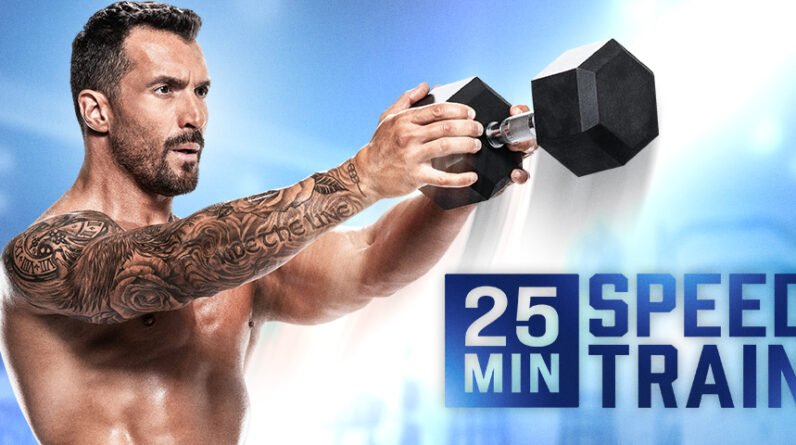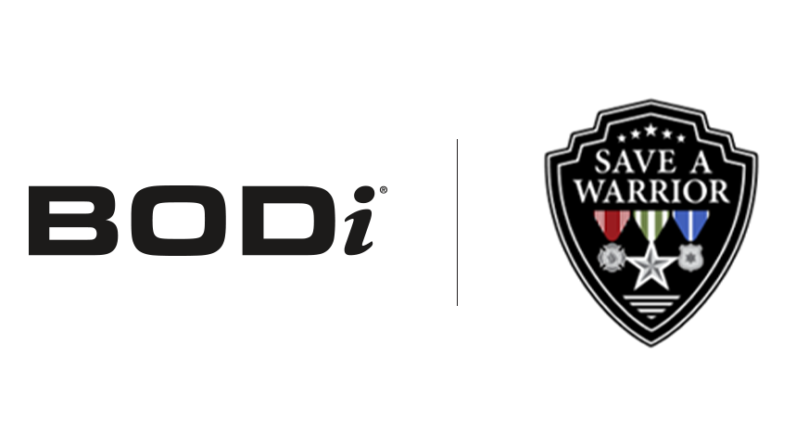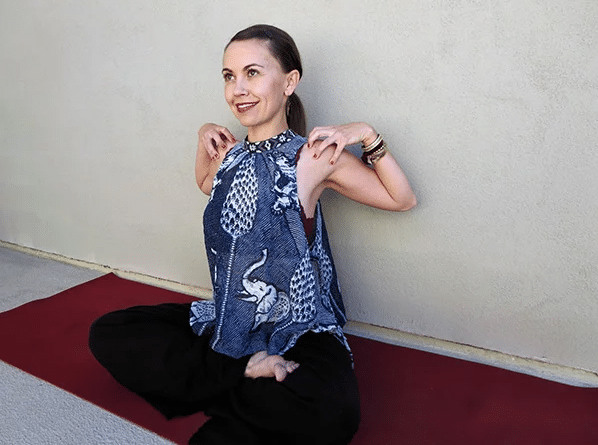
The ever-popular bench press has built its reputation over the last few decades as a rite of passage, a trial by fire, and a founding member of the powerlifting “big three.” This exercise is all that, and more. The bench press is so popular that it even has its own day of the week — “International bench day” has become synonymous with Monday in many gyms.
The bench press is a go-to exercise when you’re looking to increase the size and strength of your chest, shoulders, and triceps. The stability of the bench and the fixed range of motion of the barbell allows you to use more weight. And moving more weight means building more size and strength.

If you’re looking for a standalone bench-focused workout to increase strength and muscle in your upper body, you have come to the right place. Let’s dive in below.
Best Bench Press Workout For Muscle and Strength
To gain absolute strength, you must focus on moving heavier weights, working around 85-90% of your one-repetition maximum. (1) The cluster set technique will give you all you can handle in this regard — performing multiple “mini-sets” of low repetitions with heavy weights to accumulate significant volume. This helps set the table for more muscle because a stronger muscle has the potential for more size. After the heavy work, two different supersets concentrate on exercises that efficiently increase your chest size and strength.
The Size and Strength Routine
Perform this workout once weekly as part of your upper/lower body split. To progress with the first exercise, start at three complete cluster sets, do four the next week, and then five. When you’re able to do five cluster sets, add weight. The other three bench exercises start at the lower end of the rep range and add one repetition each week. When you have reached the upper range, increase the weight by five to 10 pounds and start the process again.
Bench Press Cluster Set
The flat barbell bench press should be a staple in your routine and your go-to for more size and strength whenever you want to move the most weight. This benching variation focuses equally on your upper and lower chest for better overall muscle development.
How to Do it: Lay supine on the flat bench, arch your lower back slightly, and plant your feet on the floor. Pull your shoulder blades together to enhance stability and upper back strength. Grab the bar and squeeze your hands hard to flex your arm and grip muscles maximally before unracking the load. Lower the bar to your sternum/base of your chest. Press the weight up, keep your back tight and your shoulder blades pulled together.
Sets and Reps: 3-5 x (4×2) — Perform four mini-sets of two reps, repeated a total of three to five times.
Rest time: Rest 10 seconds between each mini-set. Rest three minutes after each full set.
Close-Grip Bench Press
The close-grip bench press has your hands set shoulder-width apart and shift the load to your triceps and inner chest. (2) You may not be able to lift as much weight, but you’ll be training your chest and triceps from a different angle for improved muscle development.
How to Do it: Set up as you would for the flat bench press, but position your hands inside shoulder-width with your elbows tucked into your body. Pull the bar out of the rack and get tight. Pull keep your elbows close to your ribs while lowering the bar to your chest. Once you have reached your desired depth, press back up until lockout.
Sets and Reps: 3-4 x 4-6
Rest time: No rest before moving to the next exercise.
Seated Band Pull-Apart
After two pressing exercises, you’ll get a break with this simple pulling exercise to strengthen your upper back and keep up the health of your shoulders. This seated band pull-apart will increase your upper back engagement (because of the stability of being seated) without you leaving the bench.
How to Do it: Sit upright, holding a looped band at shoulder height with your hands shoulder-width apart. Pull the band apart, keeping your arms nearly straight. Keep your shoulders down and your chest up. Pull until your shoulder blades are together and your arms are extended to either side of your body. Return to the starting position and repeat.
Sets and Reps: 3 x 15-25
Rest time: Rest two minutes before repeating previous exercise.
Single-Arm Dumbbell Bench Press
This single-arm (unilateral) exercise won’t allow you to go as heavy as you could with the barbell bench press, but there is still a lot to like about this pressing variation. First, you’ll address any imbalances between sides of your body, leading to better muscle development and improved joint health. Second, you’ll have more freedom of movement, because the dumbbell bench press allows you to adjust your grip and arm angle to find a pressing path that is comfortable for your wrist, elbow, and shoulder joints.
How to Do it: Place one dumbbell on your knee while sitting on a flat bench. Lean back and drive the dumbbell toward your shoulder using your knee, while pressing the dumbbell up. Lower the dumbbell, keeping your elbow at roughly 45-degrees from your body. Press the dumbbells up to lockout and repeat.
Sets and Reps: 3-4 x 8-12 reps per arm.
Rest time: Rest 60 to 90 seconds before moving to the next exercise.
Dumbbell Chest Flye
The dumbbell chest flye is as close to a chest isolation exercise as it gets. This exercise takes the triceps out of the movement and stretches the pecs for a more extensive range of motion, which gives you better muscle-building potential. (3)
How to do it: Lie supine on a flat bench with a dumbbell in each hand. Begin with both arms locked out above your chest. Create a slight bend in your elbows and keep this bend throughout the movement. Lower your arms out to your sides in line with your shoulders. When you feel a stretch in the pecs, reverse the motion and squeeze the chest muscles to return to the top position.
Sets and Reps: 3 x 8-15
Rest time: Rest 60-90 seconds before repeating the previous exercise.
Chest Anatomy
The chest is a large superficial fan-like muscle, and the two chest muscles are the pectoralis major and the pec minor. It has two attachment points — the clavicular head on the upper chest and the sternal head attachment on the mid-to-lower chest. The pec major is on your anterior (front) ribcage, while the pectoralis minor is a small muscle underneath the pec major.

The pec major’s clavicular head originates, as expected, on your clavicle’s (collarbone) anterior or front surface. The pec major’s sternal head originates at the sternum’s anterior surface. Both muscle heads insert on the humerus (upper arm) and are involved in most upper body movements. The two primary chest functions that the training above focuses on are:
- Shoulder flexion — Raising your arms up by pushing or lifting in front of your body.
- Horizontal adduction — Bringing your hands (and joints) together in front of your pecs, as you do during a chest flye, bench press, or push-up.
Besides creating a big and muscular chest, the pecs are the primary “hugging” muscle. Pec size and strength help tackle, grab, and fend off opponents in the sporting arena, as well as throw and swing harder and faster if you play sports like football, baseball, or tennis.
How to Warm-Up for Your Bench Workout
Have you ever seen someone walk off the street under the barbell and start pressing away to their heart’s content? Don’t be that person, they’re asking for injuries and poor performance. Although not warming up may not a huge issue on rare occasions, over time, it may lead to a decrease in performance and increased injury risk.
It’s better to take the time to warm-up and get the blood moving through your working muscles, while get your shoulder and elbow joints ready for action.
Because your upper back and rotator cuffs are involved in the bench press, be sure to perform any upper back movement that is effective for engaging your scapula and rotators — face pulls with external rotation or band pull-parts.
After that, a few light ramp-up sets on the bench press (low rep, light weight sets getting progressively heavier), focusing hard on engaging your chest muscles, will have you ready to roll.
If you decide to take more time for a thorough warm-up, take this upper-body prep for a spin. There are a couple of upper back-focused exercises here because your lats and upper back stabilize your chest during benching. You’ll need to get your back ready for chest day to fully protect and prepare your shoulders and rotator cuff.
- Face Pull with External Rotation: Secure a resistance band to a stable object at eye-level. Take an overhand grip and step back until your arms are extended straight ahead. Drive your elbows back in line with your shoulders while pulling your hands to the top of your head. In the peak contraction, your thumbs should point behind you and your palms should be near your ears. Return to the arms-extended position. Perform two sets of 15 reps.
- Scapular Push-up: Begin in a push-up position, with your hands and toes on the ground and your body straight. Keep your arms stiff and locked as you pinch your shoulder blades together while reaching your chest toward the ground. Drive your hands “through the ground” as you extend your shoulder blades down and push your chest away from your hands. Perform two sets of 10 reps.
- Rear Delt Fly: Take a pair of light dumbbells in each hand, or stand in the middle of a light resistance band and hold each end. Bend forward at the waist, nearly parallel to the ground, and let your arms hang toward the ground with a slight bend in your arms. Drive your arms up in line with your shoulders. Don’t allow your arm angle to change throughout the exercise. Pause briefly before returning to the stretched position. Perform two sets of 12 reps.
- Spiderman With Rotation: Begin in a push-up position, with your hands and toes on the ground and your body straight. Step forward with your left leg, aiming to get your foot near the pinky of your left hand if mobility allows. Keep your right leg straight. Without bending your right arm, lift your left arm to the ceiling, turning your upper body to allow a full rotation. When your arm is perpendicular to the ground, feel a total-body stretch before returning to a push-up position. Alternate sides with each repetition. Perform two sets of five reps per side.
- Incline Plyo Push-up: Setup near a stable flat bench or box, in a push-up position with your hands on the bench, your toes on the ground, and your body straight. Lower your chest toward the bench and explosively drive upwards, letting your hands leave contact with the bench. Catch yourself with slightly bent arms and brace your core. Take a breath and reset quickly before performing the next repetition. Perform two sets of eight reps.
Happy Benching
There are many different ways to target your chest, shoulder, and triceps, but the bench press is the most popular and, potentially, the most effective tool. You can build muscle and strength by focusing on a handful of the most effective movements to complement the bench press. Always warm-up your chest and shoulders, and then attack the muscles using the in-depth, ultimate bench workout laid out above. Your Mondays will never be the same.
References
- Schoenfeld, B. J., Grgic, J., Van Every, D. W., & Plotkin, D. L. (2021). Loading Recommendations for Muscle Strength, Hypertrophy, and Local Endurance: A Re-Examination of the Repetition Continuum. Sports (Basel, Switzerland), 9(2), 32. https://doi.org/10.3390/sports9020032
- Lockie, Robert & Moreno, Matthew. (2017). The Close-Grip Bench Press. Strength and Conditioning Journal. 39. 1. 10.1519/SSC.0000000000000307.
- Baroni, B. M., Pompermayer, M. G., Cini, A., Peruzzolo, A. S., Radaelli, R., Brusco, C. M., & Pinto, R. S. (2017). Full Range of Motion Induces Greater Muscle Damage Than Partial Range of Motion in Elbow Flexion Exercise With Free Weights. Journal of strength and conditioning research, 31(8), 2223–2230. https://doi.org/10.1519/JSC.0000000000001562
Featured Image: YAKOBCHUK VIACHESLAV / Shutterstock







